The Lincoln Wheat pennies were produced in the Denver, San Francisco, and Philadelphia mints. Philadelphia coins are often well-struck, but Denver and San Francisco are frequently badly struck due to worn dies.
Wheat Ear Lincoln pennies are where many collectors started their numismatic careers. In distributed form, “Wheaties” are widespread and reasonably priced.
Learn more about the 1933 Lincoln Wheat penny in this article!
What Is the 1933 Lincoln Wheat Penny Made Of?
Victor David Brenner, an American sculptor, medallist, and engraver, created the design for the Lincoln Wheat penny. The metal content of the wheat penny is 95% Copper and 5% Tin and Zinc. It has a face value of $0.01 (one cent). Moreover, the plain-edged Lincoln Wheat penny weighs 3.11 grams and measures 19 millimeters in diameter.
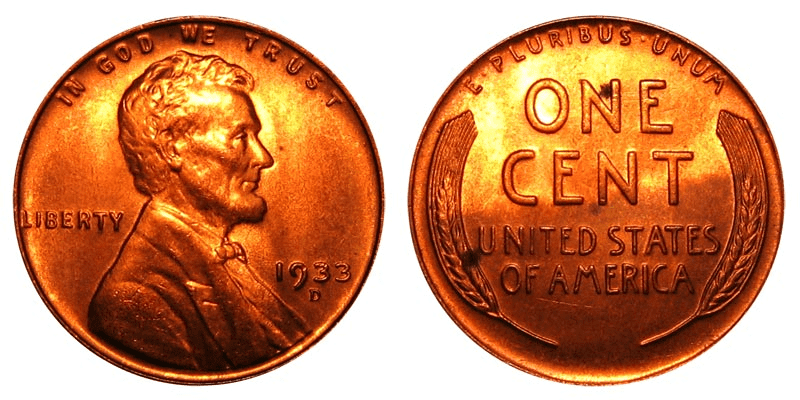
Abraham Lincoln, a lawyer, politician, and statesman who served as the 16th president of the United States of America from 1861 until his assassination in 1865, is depicted on the obverse of the 1933 Lincoln Wheat penny.
Near the coin’s upper rim, the renowned proverb IN GOD WE TRUST is arched above Lincoln’s profile. The word LIBERTY is placed behind him.
On his right, the year of minting 1933 is inscribed. The mint mark for the coins produced in Denver can be seen below the year of minting on the coin’s obverse. However, the coins minted in Philadelphia do not bear any mint mark.
The phrases ONE CENT and UNITED STATES OF AMERICA are written across the coin’s reverse. A pair of durum wheat ears can be seen on both sides of the coin. The Latin phrase E PLURIBUS UNUM, which translates to “Out of many, one,” arches above the rest of the design features, giving this coin its well-known nickname, “Wheat Penny.”
1933 Lincoln Wheat Penny Varieties
Here is a summary of the Lincoln Wheat Penny varieties minted in 1933:
| Variety | Mint Location | Mintage |
| 1933 D Lincoln Wheat Penny | Denver | 6,200,000 |
| 1933 P Lincoln Wheat Penny | Philadelphia | 14,360,000 |
| Total | 20,560,000 |
1933 D Lincoln Wheat Penny
Year of minting: 1933
Mint Mark: D
Place of minting: Denver
Quantity produced: 6,200,000
Face Value: $0.01 (one cent)
Price: $3.89 to $21.00 (circulated condition)
Mass: 3.11 grams
Edge: Plain
Designer: Victor David Brenner
Composition: 95% copper and 5% tin and zinc
Diameter: 19.00 mm
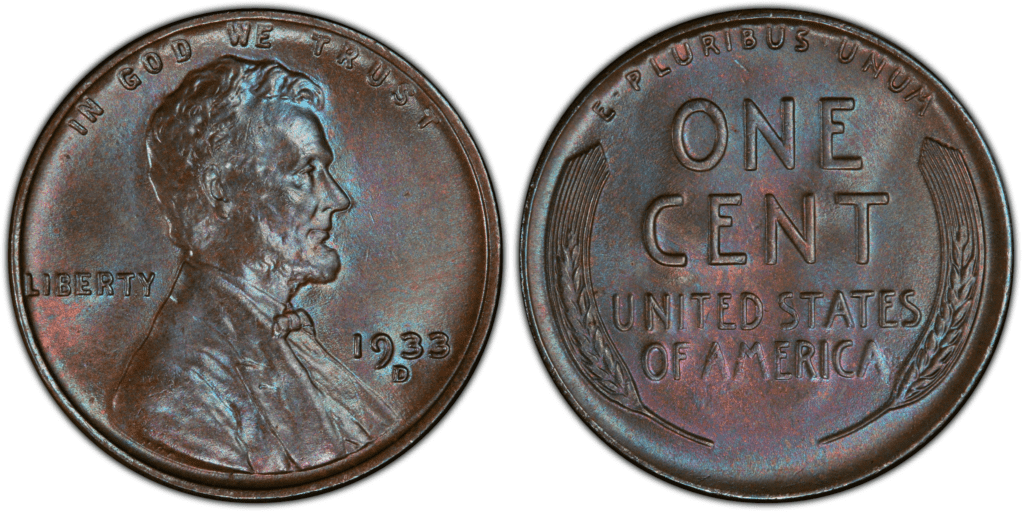
At the time of its coinage, this low-mintage issue was even more difficult to find. The 1933 D Lincoln Wheat pennies, like most coins produced during the Great Depression, were not immediately needed for trade, so collectors had to buy a two-coin allotment of 1933 D cents from the Treasury Department for face value plus postage.
The remaining coins, many of which were kept in Mint State rolls by speculators, were removed from the vaults a short while later. According to Census, finding a desirable specimen shouldn’t be too difficult, given that many specimens have been verified as MS RD gems.
The 1933 D Lincoln Wheat penny introduced a new mintmark puncheon for Denver coins, with a notably larger letter D than the one previously used for cents. The Oregon Trail Half Dollar Commemorative was the only other 1933 Denver entry that used it.
The Small D was featured on a few remaining reverse dies for other denominations that were used in 1934. However, because cents had mint marks on the dated obverse, their mint marks were always the Large D variant from 1933 onward.
1933 P Lincoln Wheat Penny
Year of minting: 1933
Mint Mark: no mint mark
Place of minting: Philadelphia
Quantity produced: 14,360,000
Face Value: $0.01 (one cent)
Price: $1.71 to $14.00 (circulated condition)
Mass: 3.11 grams
Edge: Plain
Designer: Victor David Brenner
Composition: 95% copper and 5% tin and zinc
Diameter: 19.00 mm
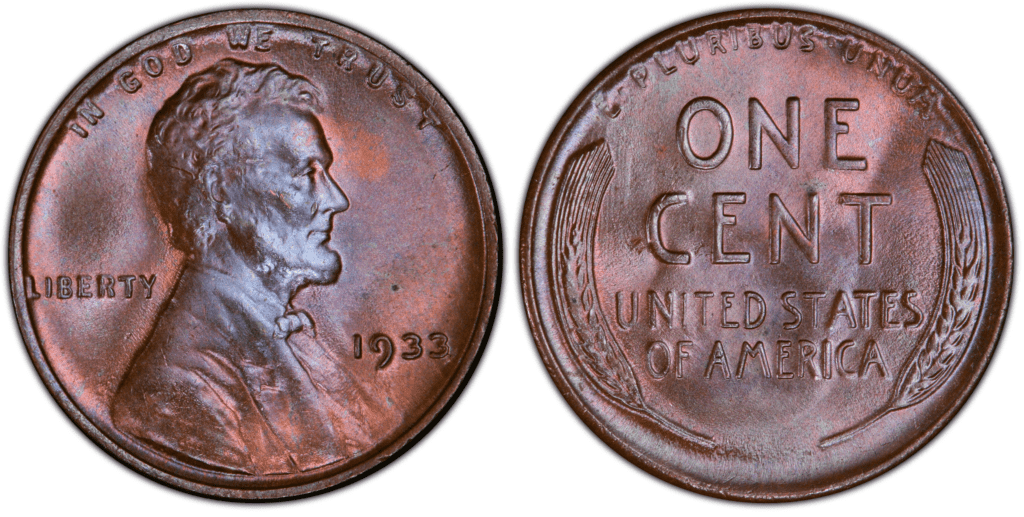
The 1933 P Lincoln Wheat penny is relatively common in Mint State despite having a relatively low mintage. Most were not made available at the time of coinage and were later purchased by speculators when they were made available a year or two later. Although there are many fully red gems, only a few are the top grades that registry collectors look for.
The majority of surviving specimens are in good condition, while a few exhibit some mild die erosion. While this issue was never entirely common, the availability of many Mint State coins keeps their values in check.
The Philadelphia Mint probably had the option to stop producing cents altogether in 1933, but it tried to keep its knowledgeable workforce on the job until better times came.
David W. Lange, in his book, The Complete Guide to Lincoln Cents, wrote that the 1933 issue was struck in small batches spaced out over many months. He saw the 1933 Lincoln Wheat penny as a coinage of convenience rather than need.
The full red Mint State 1933 Lincoln Wheat penny is a common coin that is widely obtainable. In MS67RD, PCGS has certified little under three dozen specimens. This date often comes out well-struck, except when the dies are old and mushy.
Collectors may still purchase Uncirculated 1933 Cents for “the face value of the coins and an amount sufficient to cover the postal charges by first-class mail,” according to a notice in The Numismatist’s June 1934 issue (p. 416).
List Of 1933 Lincoln Wheat Penny Errors
Errors allow coins to be uniquely their own. They are, therefore, far more expensive to purchase than their regular equivalents. Below is a list of some of the more notable 1933 Lincoln Wheat penny errors.
Filled “9” Error
Contrary to popular belief, filled die or grease-filled die errors are quite prevalent. These mistakes happen when an area of the coin’s design is covered by grease or another foreign substance on the surface of the die.
As a result, a particular area of the coin does not strike up, while the rest of it does. For instance, if you examine the coin in the image below, you can see that the number 9 in the year of minting 1933 is filled.
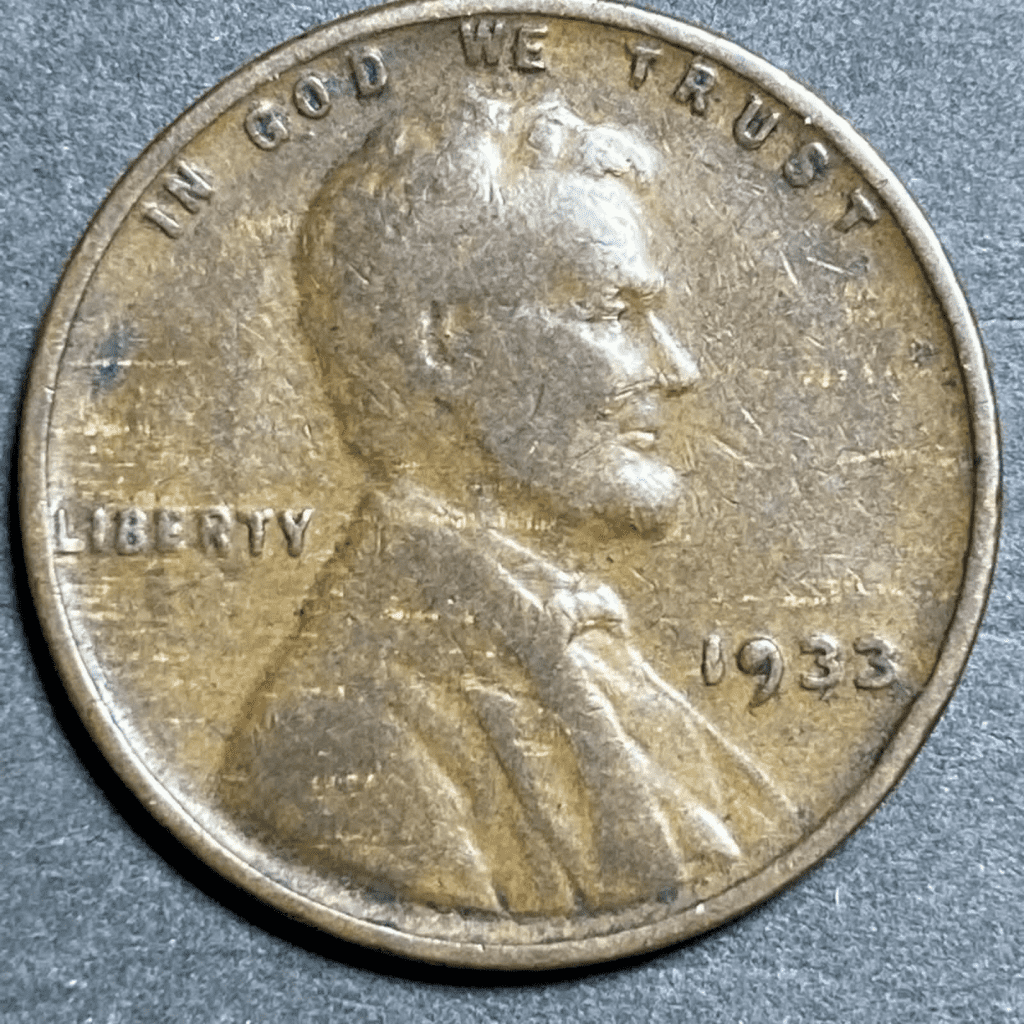
Planchet Error
A piece of the die face breaks off and falls out during a die break, a type of planchet error. This type of planchet error is known as a “piece-out” by mint workers. Small die breaks frequently appear in the design’s fine gaps. These minute die breaks are known as “die chips” when not attached to the rim.
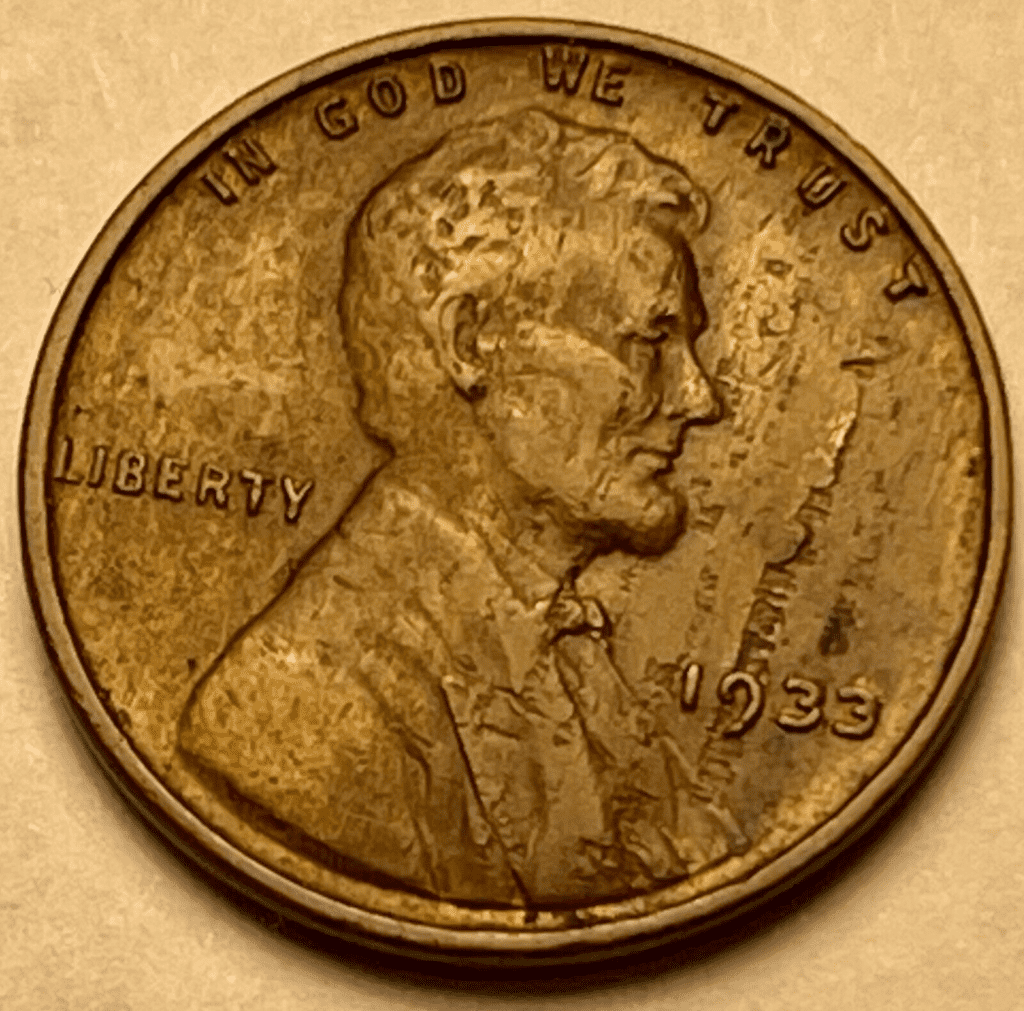
How Much Is The 1933 Lincoln Wheat Penny Worth Today?
The face value of a 1933 Lincoln Wheat penny is $0.01 or one cent (NGC Price Guide). According to the USA Coin Book, the coin’s value in average condition is estimated at $2.00 for the Philadelphia variant and $4.21 for the Denver variant.
In addition, the same source set coins in uncirculated (MS+) mint condition to be worth $23 to $34 or more for the Philadelphia variant and $29 to $39 or more for the Denver variant.
How Does The Grading System Work?
Coin appraisers regularly use a magnifying glass or a coin microscope to assess the coins’ worth and condition. These specialists assess the coin’s value based on its brightness, strike, color, preservation, attractiveness, and other characteristics.
You can contact organizations like the Numismatic Guaranty Corporation (NGC) or the Professional Coin Grading Service (PCGS) if you require advice from professionals in the coin grading sector. Your coin can be accurately graded with their assistance, raising its worth.
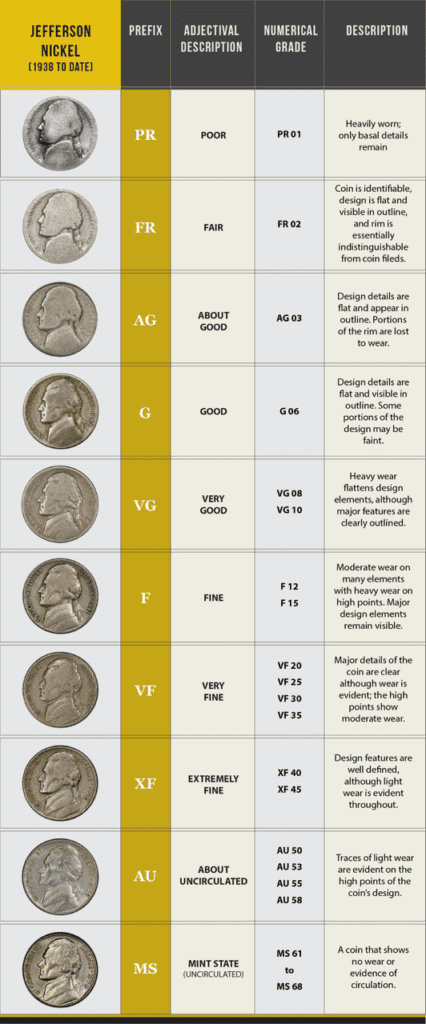
In addition to the tools mentioned above, these experts also use the Sheldon Scale, a 70-point grading system that helps classify coins into the PR (Proof) or MS (Mint State) categories. If a coin has a grade of 60 to 70, it is considered to be in MS condition, which means that any faults or surface imperfections would need to be seen through a coin microscope.
Where To Buy Or Sell 1933 Lincoln Wheat Penny?
The best places to look for a 1933 Lincoln Wheat penny are online markets and auction websites like eBay, Amazon, Etsy, and Craigslist. On those platforms, many vendors post bids for valuable things like rare coins and other collectibles. However, you can buy or sell a 1933 Lincoln Wheat penny at coin and antique stores. Finding one there might be more difficult than through online marketplaces.
You may also speak with reputable coin grading service providers like the PCGS and the NGC if you need advice on where and how to buy or sell 1933 Lincoln Wheat pennies.
FAQs
Where is the mint mark on a 1933 wheat penny?
The mint mark for the coins produced in Denver can be seen below the year of minting on the coin’s obverse. However, the coins minted in Philadelphia do not bear any mint mark.
Is a 1933 wheat penny valuable?
According to the NGC Price Guide, the face value of a 1933 Lincoln Wheat penny is $0.01 or one cent (NGC Price Guide). In addition, the USA Coin Book estimates the coin’s value in average condition to be $2.00 for the Philadelphia variant and $4.21 for the Denver variant. The same source also set coins in uncirculated (MS+) mint condition to be worth $23 to $34 or more for the coins minted in Philadelphia and $29 to $39 or more for those minted in Denver.
Is a 1933 wheat penny rare?
The 1933 Lincoln Wheat penny is sought-after because of its rarity, age, and historical significance. Given how long ago this particular coin was produced, fewer of these coins will ever be made available. Because of this, coin collectors will take every measure necessary to get their hands on these coins.
